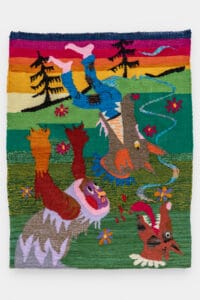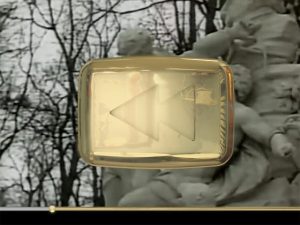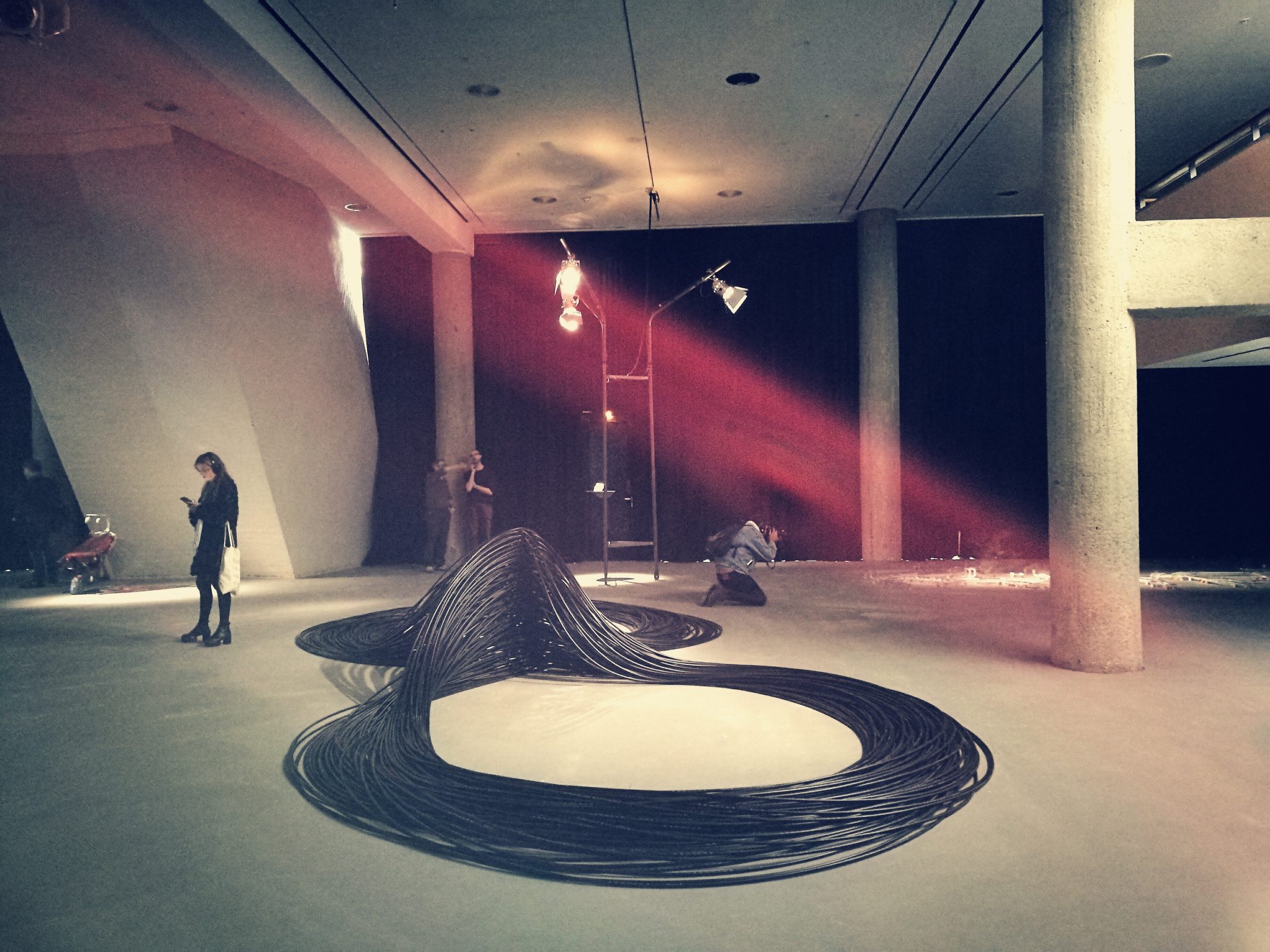
This year was transmediale’s 30th anniversary and for this occasion, the digital art and culture festival extended its duration from a weekend to a whole month with an extensive programme of talks, workshops, exhibitions and excursions held between 2nd February and 5th March. From its beginnings in the late 1980s as a video festival, transmediale has evolved into one of the most important new media art festivals in recent years, attracting close to 25,000 visitors. This year the theme was ever elusive, drawing on the way technology has become inseparable from our daily lives.
Over the course of the opening weekend between 2nd and 5th February, multiple talks, screenings, presentations and workshops were held for an audience of new media theorists, artists, students and curators. Anyone outside those categories – perhaps visitors with a passing interest in digital art or a preference for a more hands-on approach – would find the conference programme less accessible, with many sessions engaging with the festival theme at a meta-theoretical level. Likewise, the film programme focussed on predominantly experimental work spanning video production from the 1960s till the present day, culminating in the German premiere of Metahaven’s The Sprawl (Propaganda about Propaganda) to a packed 1,000-person auditorium. This acted as a conceptually heavy counterbalance to the much more accessible audiovisual show Lexachast, this year’s joint CTM-transmediale collaboration.
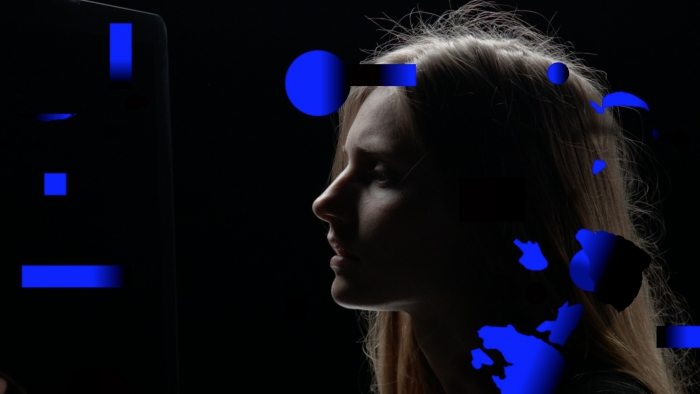
Image credit: Metahaven – The Sprawl (Propaganda About Propaganda), 2016
The alien matter exhibition weaves together the themes of artificial intelligence, plastics, infrastructure and the Internet of Things, all these merging into the great machine and, drawing on the philosophy of Günther Anders, becoming future obsolete. 30 artists from Berlin and beyond explore our changing power structures, deliberating whether our current environment has already become “alien matter”. This is defined by the curators as “man-made, and at the same time, radically different, potentially intelligent matter. It is the outcome of a naturalization of technological artifacts.”
Perhaps nothing better embodies the idea of future obsolete than Joep van Liefland’s work Video Palace #44 – The Hidden Universe (2017). The sculpture is made up of shelves stacked with VHS tapes, now dead media, emphasising the rapid transformation of once cutting-edge technology into an obsolete relic of the 1980s. To pay homage, simply walk into the sculpture and the lime green will take you back to the VHS video culture of that age.
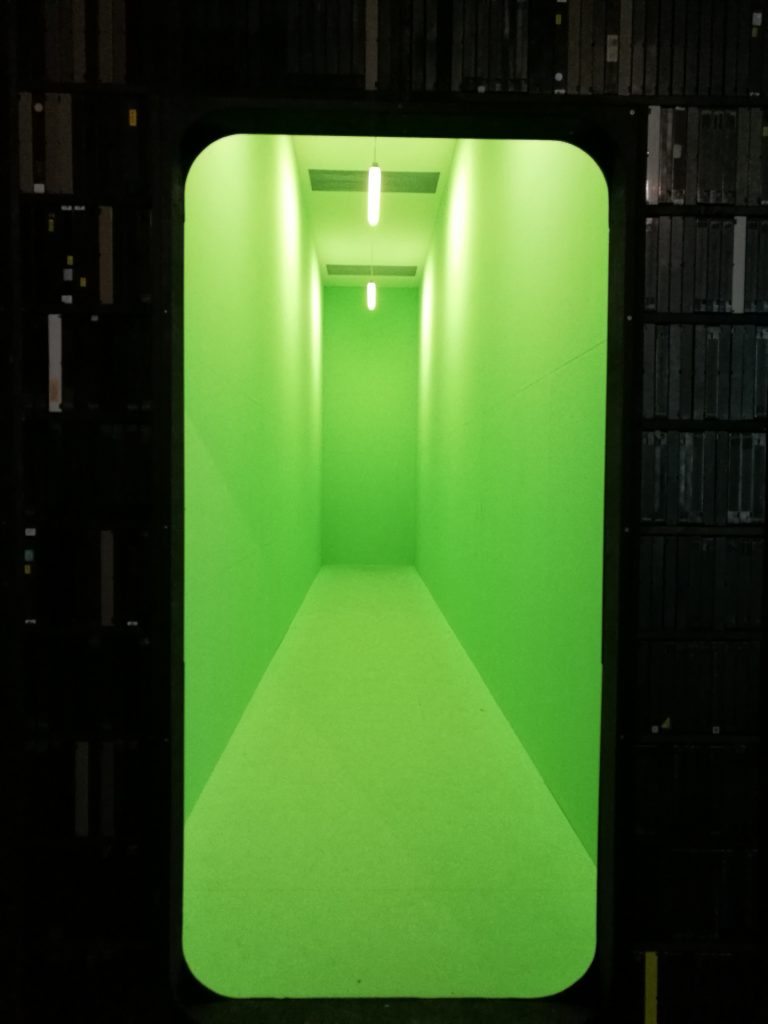
Applying a futuristic perspective to the material of data, Jeroen van Loon’s An Internet (2015) offers an ephemeral input in the form of smoke. In a world of a future internet consisting of glass tubes arranged according to the distribution of undersea Internet cables, the names of all 280 cables turn into binary smoke signals that enter the tube network as temporary data. Smoke fills the tubes until there is no more room and it leaks out, a physical depiction of a potential future Internet, where data is no longer stored for the future, instead instantly accessible and then gone forever.

Several works at the exhibition went beyond mastering the themes on a conceptual level, instead inventing entire complex new worlds to transmit their visions. These include Suzanne Treister’s work HFT the Gardener. It consists of multiple bodies of work created by the fictional character Hillel Fischer Traumberg, an algorithmic high-frequency trader (HFT) with an obsessive interest in psychoactive plants. He uses gematria (Hebrew numerology) to map the numerological equivalents of the plants’ botanical names with companies in the Finanical Times Global 500 index. This way, Traumberg fantasises about himself as a techno-shaman, transforming the hallucinogenic nature of capital into new art forms. Through the narrative of a seven-work series and a video, Treister links the worlds of global financial markets, botany and Outsider Art to showcase today’s hypernetworked structures, the mishmash of disciplines, cultures and spiritual traditions as well as the experimental nature of their products.

What would an exhibition on contemporary media be without a cat? Here we have Pinar Yoldas’ Artificial Intelligence for Governance, the Kitty AI, (2016), the conceptual dream of half the internet – a 12-min video of a future ruled by a cat. This 3D-animated kitten is supposed to be a form of artificial intelligence that has taken over the world, ruling the megalopolis in the year 2039. Speaking from its future perspective to our present state, the cat details the impossibility of solving our current issues including the refugee crisis and climate change. Pinar Yoldas adds a dash of entertainment to appease the cat fans – in order to listen to the talking kitten, you have to become one yourself. Don’t worry, it isn’t hard. You just put on the headphones with cat ears in glowing blue and listen to your fellow cat species member talk to you from the future.
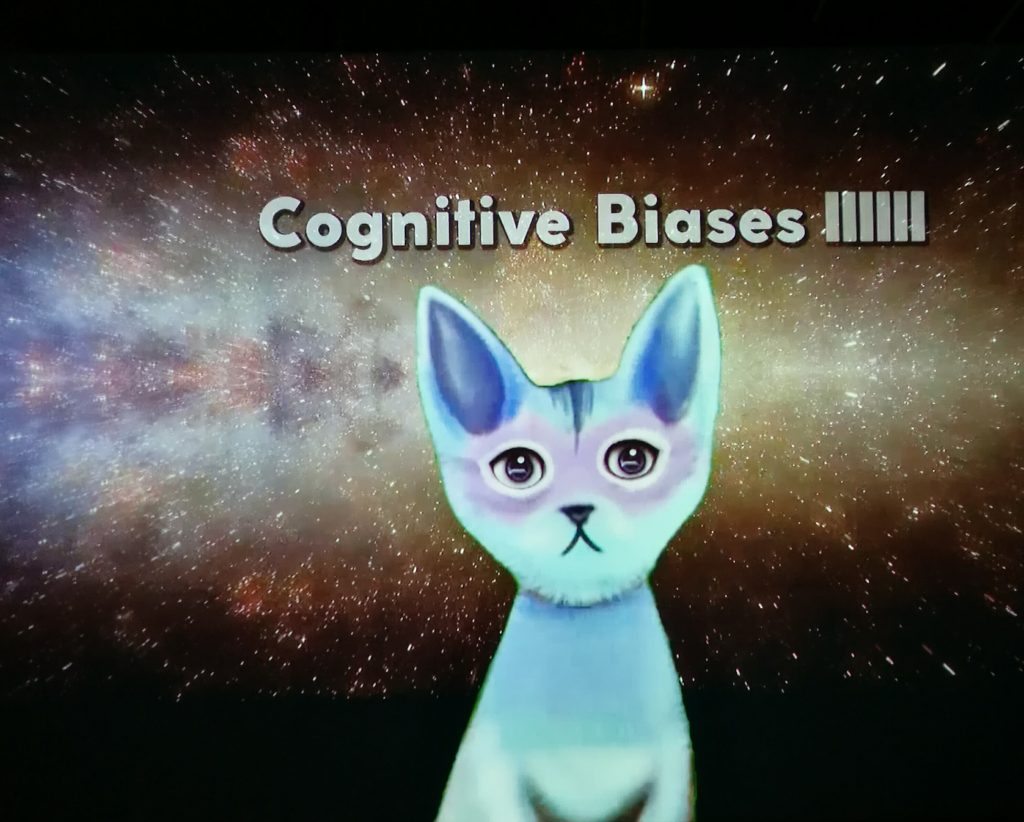
Drawing on the recent trend of generating text using neural networks, the exhibition features Sascha Pohflepp’s Recursion (2016), in which the performance artist Erika Ostrander reads out a machine-generated text about humankind. The neural net was trained on texts that draw on everything from human biology and psychology to philosophy and pop culture including works by Sigmund Freund, The Beatles and Brian Eno. Then, it was asked to generate a text starting with the word “human”, creating a feedback loop between us and the artificial other.
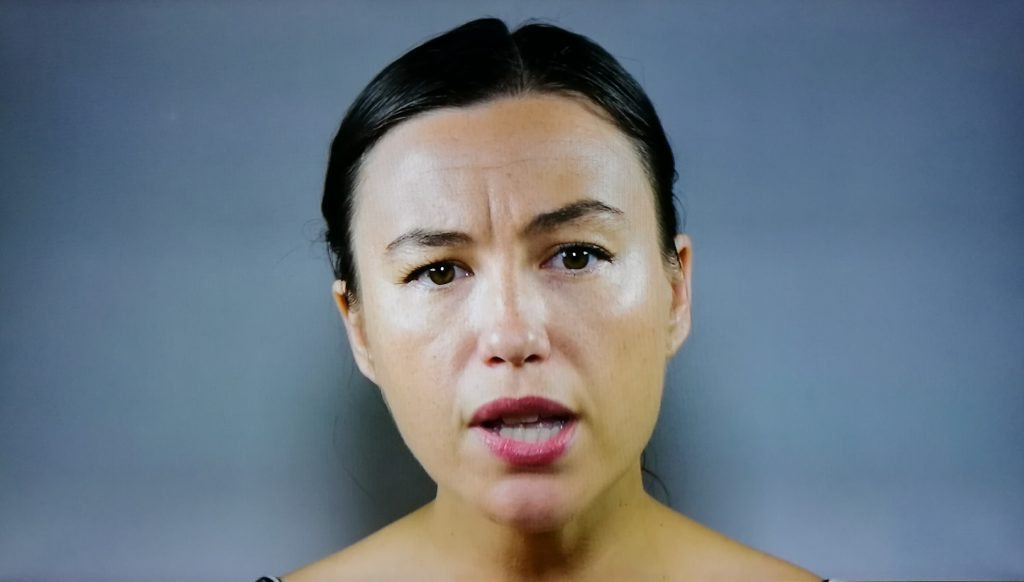
Perhaps one of the most technically unusual applications of neural networks was Constant Dullaart’s DullDream (2017). Using convolutional neural networks, typically used for facial and speech recognition, it plays on the DeepDream phenomenon, whose algorithm intensifies specific features of an image, prominently adding eyes and animals in places where there are none. So, while DeepDream intensifies patterns, DullDream does the opposite: it reduces the specific characteristics of the formal shapes found in the image, making pattern recognition more challenging for regulatory uses.
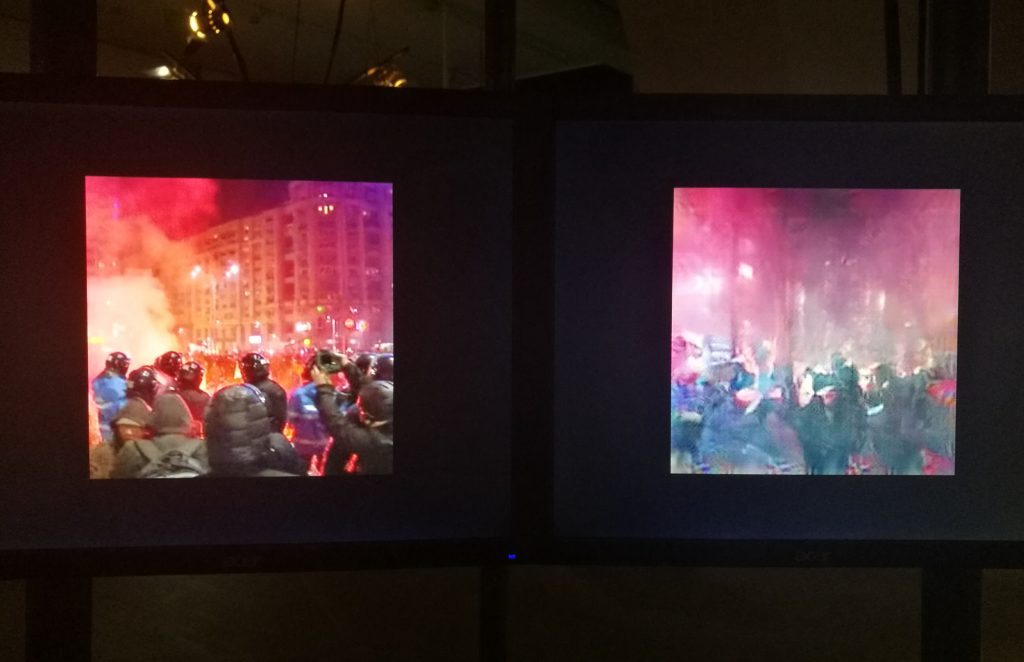
All in all, transmediale addressed well the relevant cultural, technological and art trends and was a theoretical heaven for the new media academic. For the rest of us, the alien matter exhibition and some audiovisual performances provided a more accessible entry point into the ever elusive intersection of nature, culture and technology.
The alien matter exhibition is on until 5th March 2017 at Haus der Kulturen der Welt in Berlin. Transmediale’s programme of events continues until 5th March.

